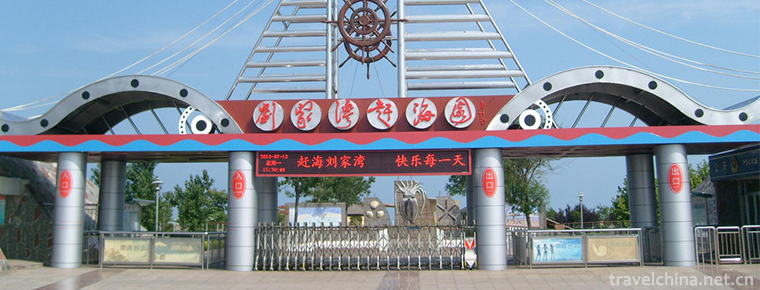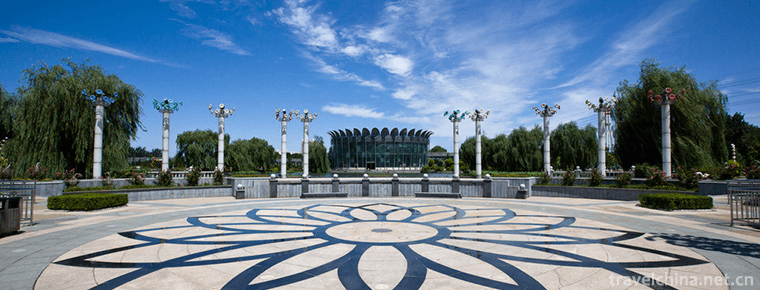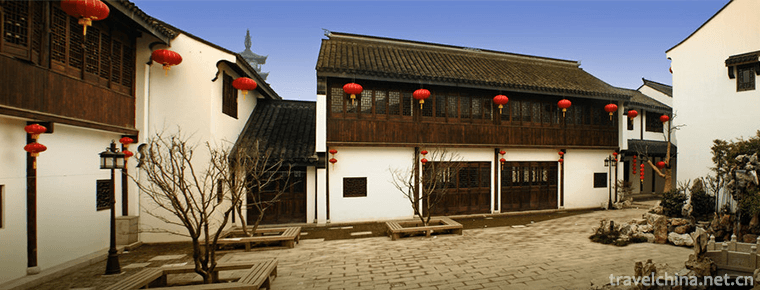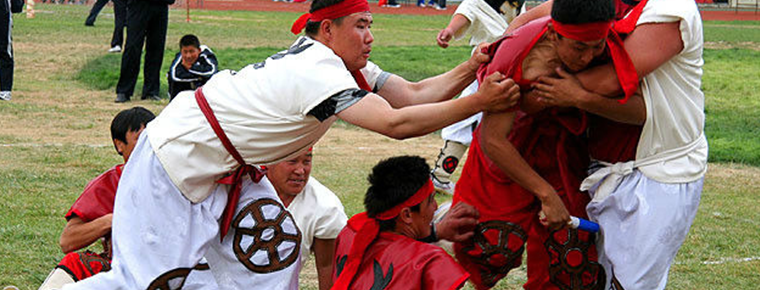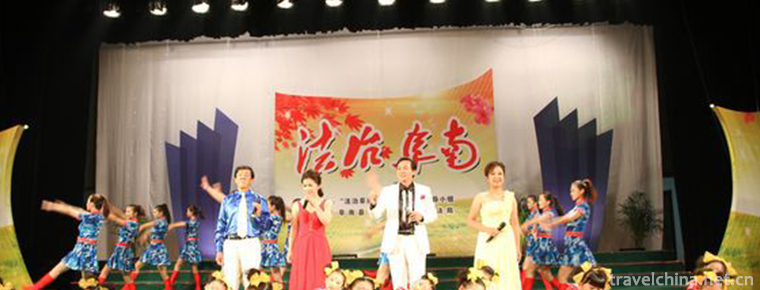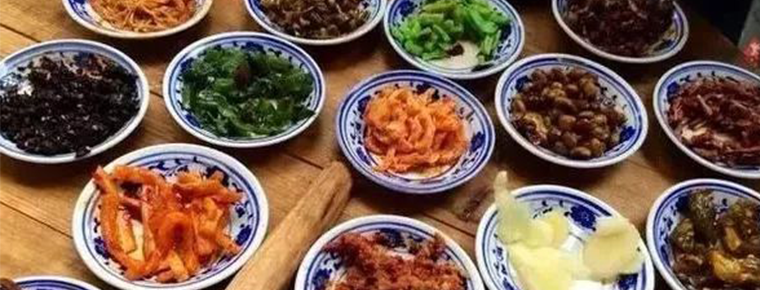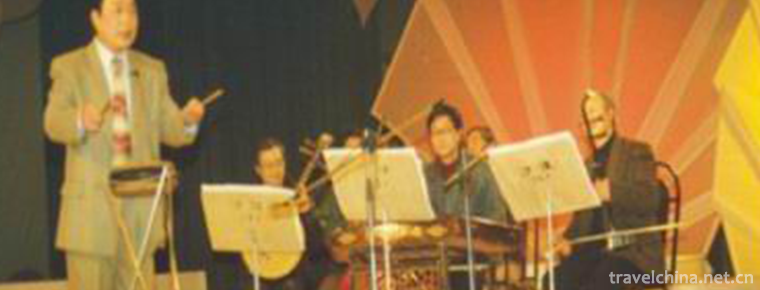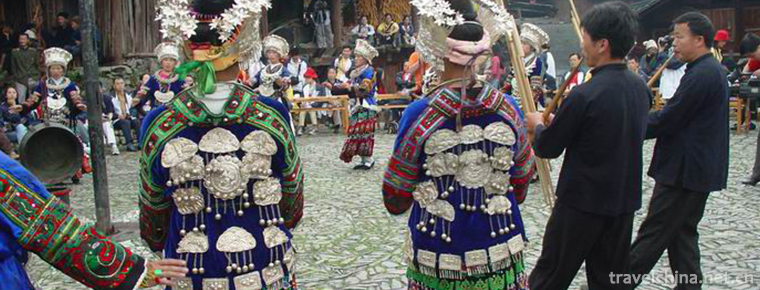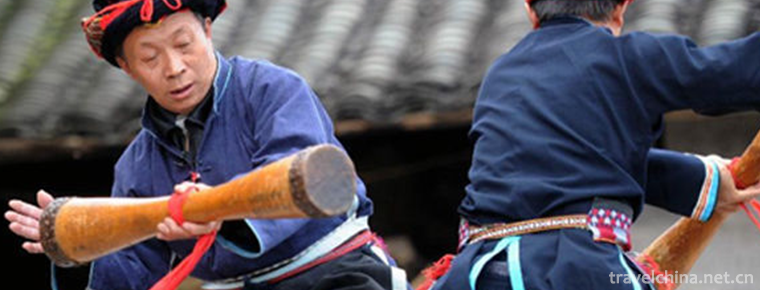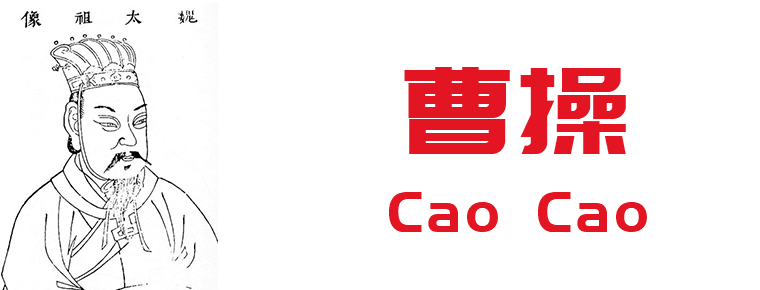Tone tune
Tone tune
Colour tune, commonly known as tune, colour tune, colour lantern, Na Hao Hey and so on, is one of the local operas in Guangxi. It belongs to the system of Lantern opera. It originates from the "twin tune" derived from the rural singing and dancing and rap in Guilin. Originated in the rural areas of northern Guangxi, it is widely circulated with different names. Guilin is called "color tune". Liuzhou, Hechi and some counties in Wuzhou are called "tune opera". Pingle and Lipu are called "color tune", "tea picking opera", "color lantern". Ningming and Baise on the left and right rivers are called "tea picking opera" and "Haohai opera", which are collectively called "color tune opera" after 1955.
Brief history of drama
Colorful tunes are lively in form, easy to understand, and the content of the plays is very close to the people's life. They have strong national style and local characteristics. They are known as "Happy Opera full of earthy fragrance" and have been selected into the national intangible cultural heritage list. In 1955, it was universally named "Color Drama".
Color tune was originally called tune. It is one of the most popular operas of all ethnic groups in Guangxi. It belongs to the system of Lantern opera. It originates from the rural singing and dancing in Guilin. The "pair tunes" derived from rap and singing are widely distributed. There are about 500 kinds of colour operas, such as monologue opera, antithesis opera, major opera, three minor operas, leading opera and counterpart opera. Colour opera is popular in Guilin, Liuzhou, Hechi, Baise and other areas. Due to dialectal differences, names vary from place to place: Guilin area is called "color lantern", "color tune", "singing lamp"; Pingle, Lipu, Liuzhou, Hechi area is called "color tune", "tea picking opera", "tune opera"; Baise and Nanning areas are called "tea picking", "Hi-Hi opera", "Hi-Hi opera"... But the most common ones are "tune opera" and "tea picking opera". In 1955, when they attended the Beijing mass music and dance performance, they unified the name of "color opera". Common are "Wang Sandao Bird", "Liu Sanjie" and so on.
Guangxi is a multi-ethnic inhabited area, with rich and colorful folk music and dance. Colorful tunes originally evolved from folk songs and dances and rap into "paired tunes". It consists of a couple of men and women singing to each other, men dancing fans and women waving towels to show the joy of love. The content of singing is mostly to praise nature or love. The tunes used are folk songs, folk songs and minor tunes.
During the reign of Qingdaoguang and Guangxu, tunes spread from north to south, forming the main distribution areas centered on Guilin, Liuzhou and Yishan, and continuing to spread to the south. Influenced by Hunan Huagu Opera, Jiangxi Tea-picking Opera and Gui Opera, tune opera has gradually evolved from clown and Xiaodan's "Two Little Opera" to "Three Little Opera" with character stories, clown and Xiaodan (that is, the so-called "Thirty-six out of Jianghu Diao"). In the rural areas of northern Guizhou, "seven tight, eight loose, nine happy" or "mountain-crossing class" composed of seven, eight or nine people, requires artists to be versatile, easy to travel and tour between villages. Through their long-term performances in villages and festival temple fairs, they have accumulated 36 "three small plays" such as "double-look", "double shop", "fortune-telling for the blind", "Wang Sanda-bird", "three-look-at-relatives", which are called "Jianghu Diao" locally. During this period, tune music initially formed three distinctive categories: tune, board and tune. It has been said that there are nine tunes and eighteen tunes. At the same time, it has also been reformed in the aspects of make-up, performance and business. In the thirty-second year of Guangxu in Qing Dynasty (1906), the most famous grass-roots opera class broke the old custom of "women do not sing". The first batch of female danjiao in color opera appeared.
Before and after the Revolution of 1911, color tunes entered the town stage from the rural floor, and the "mountain-crossing class" developed into a half-professional tune class of 20 or 30 people, such as Tong Yue Tang, Hui Yue Tang and Qun Yue Yuan. At this time, the original 36 "river and lake tunes" have been difficult to meet the audience's requirements, artists based on fiction and folk stories on the compilation of "two women fight for husband", "grasp grinding tofu", "break the ladle", "evil daughter-in-law into cattle" and other "major tunes" play. At the same time, artists have also created a lot of "Opera" for their livelihoods, such as Class A performing "Girls to Girls", Class B acting "Girls to Girls", Class B acting "Three Kinships", Class A acting "Four Girls to Kinship" and so on. The result of this competition not only enriches the repertoire of color tune, but also promotes the development of color tune music and performing arts. Before and after the Revolution of 1911, famous artists emerged in large numbers, such as Guilin has "four champions": Leng Guifu, Zhu May 8, Luo Shaoting and Qin Laoshi; Yishan has "four famous figures": Wu Senior Citizen, Pan Laoting, Liang Rushan, Shaving Man; Ningming has "Ghost Face King" Zhou Dynasty outline; Rongan and Sanjiang have "Tune King" Li Dashu, Chen Songshan, and so on.
After 1927, the artists were badly damaged and the color tunes were on the verge of decline.
After the founding of the People's Republic of China, colour tune has gained new life. Guihua Tune Troupe in Guilin, Liuzhou Peasant Tune Troupe and other professional troupes have been established one after another. Amateur tune troupes also spread throughout urban and rural areas.
In the spring of 1955, Guangxi Literature and Art Cadre School opened a color tune training course and trained a group of outstanding young actors, such as Fu Jinhua, Tang Ji, Wang Yuzhen, Luo Liang, Yang Aimin, etc.
Guangxi Drama Troupe was formed in 1956.
In 1959, Liuzhou Colour Opera Troupe compiled and performed the Colour Opera "Liu Sanjie", which was warmly welcomed by the local and external audiences and contributed to the improvement of the colour tune art.
In 1965, the Guangxi Drama Troupe produced the modern drama "Three Little Red Flowers" and produced a color film by the Beijing Film Studio.
artistic characteristics
The color tune was originally in the form of "double-reed eggs", in which the singles performed two roles of men and women, while the "paired tune" was performed by both men and women on the same stage. More from myths and legends, chapters of fiction, anecdotes, the accumulation of 500 plays. Guilin dialect is used in the performance of color tunes. All ethnic groups in this area can understand not only, but also the actors of color tunes of their own nationalities. At the end of the Qing Dynasty, after the development of color tunes into operas, there were 36 titles such as "Wang Sandao Birds", "Three Seeing New", "Girls Given by Women", "Doubles Shop" and "Wang Erbao Xie".
Aria tune
The colour tune singing tune belongs to the syntheses, which can be divided into three categories: board, tune and tune. Among them, there are complaint boards, crying boards, scolding boards, worry boards, etc. There are classical tunes, horse-walking tunes and so on. There are Xiaosheng tunes, Danjiao tunes, clown tunes and so on. According to the identity and occupation, there are public tunes, Huazi tunes and so on. There are burden-bearing tunes and drinking tunes to express body movements. In addition, some popular folk tunes, such as flower tunes and October flowers, are also absorbed in the tunes. The music accompaniment of color tune is divided into left and right fields, left field is string music, and right field is percussion music. String music has tuned Hu (also known as the drum, similar to Erhu), dulcimer, pipa, three strings, suona, flute and other instruments, with tuned Hu as the main music. The Gong and drum music cards of percussion music are relatively simple, commonly used with three nods, one-stop, one cymbal, four cymbals and so on. The same tune can be changed on the board and cavity according to the different performances, characters and life. Therefore, there is the theory of "tune sharing and cavity subdivision". For example, there are Xiaosheng tune, Danjiao tune, ugly foot tune, Dandan tune, Laosheng tune and Wazi tune, and there are public tune, Huazi tune, Meixiang tune, matchmaker tune, monk tune and strong tune according to character status and occupation. According to labor and daily life, there are shoulder chamber, boating chamber, digging chamber, dressing chamber, drinking chamber and so on.
There are more than 300 cards. Music accompaniment is divided into left and right fields. The left field is orchestral music, including tuning Hu (similar to erhu), yangqin, pipa, three strings, suona, flute, etc. The right field is percussion music, gongs and drums are relatively simple, commonly used is a dragon, four cymbals, one cymbal, three nods and so on.
Prop
The art of colour tune performance is rich in local characteristics, and it is the most prominent in the "three small operas". For example, there are dozens of footwork, fanflower, turning around, appearing and unique fingerprints of danjiao. Ugly footwork method can be divided into three categories: short pile, middle pile and high pile. Among them, short pile is the most widely used. Fans, handkerchiefs and ribbons are considered as three treasures in the performance of color tunes. Among them, fan is the main one. Dancing fan flowers are used to express emotions with three beats and five movements, ball fans, high and low fans, butterfly fans, swing fans, rocking fans, wave fans and so on. They can also be used as brooms, torches, scrolls, daggers, hammers and so on, so they are called "all-purpose props".
Technique
The basic characteristics of the performing arts of color tunes, such as eyes, hands, body movements and footwork, are mostly embodied in Xiaodan and clown (including Xiaosheng), followed by Shadan (that is, Ugly). Clown and Danjiao's footwork, turn around, appearance, fanflower, hand flower are rich in the characteristics of the play, especially in footwork. Such as "bad footstep", "twisting silk step", "kicking step", "tentative step", "crosswalk" and so on. Danjiao's "step by step", "step by step", "cloud step" and so on. Fans are the main part of the three treasures (fans, handkerchiefs and ribbons) in the color tune. Fans can also be used as tools and weapons in performances, so they are called "omnipotent" props.
theme
Color tune plays are mostly about labor, love, family life and so on. There are a large number of oral and manuscripts circulated among the people. Guiliu dialect is used in the performance, mainly in the form of singing and dancing of Xiaosheng, Xiaodan and clown (three minors). Among them, the gait, turn, appearance, fan flower and hand flower of clown and danjiao are very characteristic, especially the footwork. Because it is deeply rooted among the rural people and closely combined with local folk slang minor, the color tune has formed a harmonious content and lively form of performance style. Fans, handkerchiefs and ribbons, known as the "three treasures" of the color tune, play an important role in the performance.
Role play
There are three major industries in color opera: life, Dan and ugliness.
1, Sheng Xing
It is divided into three categories: Xiaosheng, Laosheng and Baby.
Xiaosheng is full of wit and courage, lively and lovable young people with lofty ideals. They give equal attention to singing, doing, reading and dancing. Most of them perform small plays with songs and dances. Many of them were originally scandals. After 1949, they were suspected of disgracing the working people because of their scandalous facial makeup. For example, the third-class role of Wang in The Three Beating Birds of the King is.
Lao Sheng is a positive figure with many ornaments and old age. He has crane hair and white beard (attached beard), and sings a duet. For example, Xu Fengshan in Wuzitu, Zhang Guangcai in Wuniang Hair Cut, Land God in Land Helper, etc.
Dolls adorn minor children, such as Wang Ma in Wang Ma Jiejie, dog Bao Nao Xue and school children. The performances are often performed by trainees or by Huadan and Xiaosheng.
2, Dan Xing
It can be divided into four categories: Huadan, Zhengdan, Laodan and Shadan. Huadan often plays songs and dances, performing agile and graceful, lively and warm, beautiful and lovely, singing, doing and dancing. For example, Aunt Mao in "Wang Sandao Birds", "Dragon Girl and Han Peng" and "Liu Sanjie in"Liu Sanjie"and so on.
Be honest in words and deeds, behave in a dignified manner, and be good at singing and doing. Such as Ponzi in Chang Zi Ji, the three sisters in Xia Nan Jing, the mother of the modern drama Three Little Red Flowers, etc. Sometimes they also play cheerful and spicy characters. Their performances are similar to those of Shadan, such as Sun Erniang in Doubles Store and Zhang Ersiao in Plastic Bodhisattva.
Lao Dan's characters are white-haired and stick-holding mothers-in-law and ordinary old women, with diverse personalities and different identities. They are mainly singing and doing. For example, the mother of Niang Send Daughters, the mother-in-law of Chang Zi Ji and the mother-in-law of Daughter-in-law Lima.
Shadan, also known as Ugly Dan, is decorated with spicy second-wife, matchmaker, Witch and other characters, who perform with emphasis on reading white and doing good deeds. For example, the matchmaker in "Liu Sanjie", "the second sister-in-law in the arbor fighting fire" and the daughter-in-law in "The evil daughter-in-law turns into a cow" and so on. In the color tune drama, Danxing's repertoire is very rich, there is the saying that "no Danxing is no drama".
3, scandal
There are three kinds of ugliness: right ugliness, bad ugliness and fold ugliness.
Most of the characters in Zhengugou are peasants and laborers of various professions, with different ages and personalities. They are all decent characters in comedy. They perform funny and funny, act bright and generous, and pay equal attention to singing, doing, reading and dancing. Such as Hu Lacquerman in Painter Married Daughter, A San Drama Master, A San Drama Master, and One Grab in Grinding Tofu.
Lousy ugly people often act as careless people, with twisting short stakes as the main footwork, facial muscles are flexible, moody, funny words and deeds, good at reading and doing. For example, Wang II of "Wang Erbao Xie", Wang Wang of "Wang San Blows Smoke" and Hu Po of "Doubleshop" are second-class.
Folds are ugly and long clothes are ugly. Most of the characters are more identifiable. The performances are based on high, medium and low stakes. They are good at reading and doing, and have more fanning skills. For example, Master Liu in "Watching Families across the River", Ma Jinlong in "Washing Embroidered Shoes" and county officials in "Blessing Bodhisattvas at Midnight". The scandal performance of color opera is rich in characteristics and has many repertoires.
The appearances of various trades and professions, also known as "the stage", are more than ten kinds. There are corner appearance, fan opening appearance, fan lifting appearance, fan pressing appearance, side appearance, shame appearance and so on. Xiaosheng and Danjiao's common appearances include Golden Rooster Independence, Fuhu Wolong, Drunken Immortal Pillow, Looking back at the Moon, Autumn Wave Review, etc.
Forms of expression
The acts of color tune are Xiaosheng, Xiaodan, Joker, Daniel, Laosheng, Laosheng. There are no net horns and dolls. The role of children is played by Xiaosheng or Xiaodan. Jingjiao is played by Laosheng. The formation of these acts is also gradually improved with the development of the play. And the performance figure of color tune is mainly embodied in clowns (including Xiaosheng and Xiaodan), followed by Shadan. There is a jargon called "learn the tune of pairs of sons well, the foundation is firm." Explain the position of the body in the performance of Pair Tunes. Xiaosheng and Xiaodan in Paizi Diao use the steps, fans, turns and appearances of color tone figure to make the performance style of color tone more distinct.
Footwork
The footwork is based on the short step. "Short step" can be divided into four categories: short pile, middle pile, high pile and high-low pile. It is the special step of the puppet and clown. It is used on different characters to highlight different types. For example, in the treatment of the traditional opera "Three Views of Kinship", the three different characters of butcher Zhang, tailor Li and young peasant Ding Xiaoge are compared. Zhang Tuhu is a short, fat and vulgar man, while Ding Xiaogu is a righteous, industrious and young farmer when he walks in the middle of the pile, while the tailor who walks in the high pile shows the characteristics of a snobbish broker who is "not exposed to the sun, not dried, thin as a bean horn". The three people received the artistic effect of comedy in the comparative dance of high, low and middle stakes and short steps on the same scene. In addition to the "short step", there are 25 kinds of color tone footwork, such as twisting silk step, cloud step, longitudinal step and dragonfly step.
Fan flower
Fanhua is a fan dance expressing feelings. Among the fans of men and women, the fans of female Dan are more beautiful and colorful than those of clown. There are 17 kinds of female fans, including wave fan, rocker fan, cross single flower fan, inverted fan, tray fan, throwing fan, Lingyun fan, half moon fan, back fan, switch fan, butterfly fan, wave fan and so on; 8 kinds of male fans are chopping fan, three beats and five motions fan, rotary fan, butterfly fan, flat shoulder fan, high and low fan, weak fan and wave fan. In addition, there are 15 kinds of ceremonial fans, rocking fans, back-facing fans, fans, butterfly fans, Guanyin fans, finger cloud fans, snatching fans, moon fans, counter fans, lighting fans, chopping fans, fluttering fans, lifting fans and end fans used by Laodan and Miss and Maids. The fans in the color tune rank first among the three treasures (fans, handkerchiefs and ribbons) in the performance. It can be used as hoe, pole, machete, broom, tray and so on. For example, Aunt Mao in "Wang Sandao Birds" performed the body part of opening cage to feed chickens, sprinkle water and sweep the floor in the dance of sweeping the yard. Fans were used as trays, basins, brooms, skips and other props, showing vivid and beautiful performance.
Appearance
Appearance is the "stereotyped" static movement in each dance section of the color tune. It can reflect the meaning of the movement and the "inner" thoughts and feelings of the characters. There are 10 kinds of female appearances, such as Guanyin as lotus, scattered flowers, butterfly shoe, half-nursery moon and so on. There are 17 kinds of male appearances, such as Golden Rooster Independence, Swallow Surfing, Night Opening Door, Well Care, Night Pirate Ganoderma lucidum, Taijiao Liang, Quixing Dou Dou, Peng Spreading Wings, Looking back at the Moon, Lion Rolling Ball, Eagle Wing Racing, Dongbin Back Sword, Yulong Exploring Sea, Reversed Golden Gourd, Reversed Cloud Head, Fairy Child Bedding Moon
Turn around
Turn around is the tie of color tune in dance performance. There are seven kinds of male turning: one-foot turning, two-foot top turning, three-fold turning, corner turning, flat jumping, short turning, butterfly turning, screw turning, carp turning, one-foot turning and nun turning. The application of "four skills and five methods" is summarized by the veteran artists of color tune. They often say "tricks" such as "appearing outside the horse door, reading white with eyes"; sitting upright, standing like nails, floating like a nail, standing like a nail; the corner should rotate smoothly, standing like a nail; the eye should be handy, hand should be handy, fan like butterfly dance, like a dragon dish; rigid and soft without demarcation, linking emotions inside and outside; opening the button hole, and correcting the characters of the chamber garden. Four and five merits are true and false. Let's talk about relaxation and fall right into the horse's door. Generally speaking, the essence of color tune art is expressed.
Facial makeup
Colour operas come from local operas in rural areas. They all reflect the living standards of rural laborers, while artists mostly come from rural laborers. Therefore, the facial makeup in color tone is characterized by the clowning of the "miniaturized face". Small flower face, also known as white nose, or pink nose, depicts the flowers and animals of nature on the nose, such as butterfly face, frog face, dragonfly face, carp face, shrimp face, crab face, gourd face, peach face, plum flower face, Python face, money face, turtle face and so on. These faces are used on various types of people to express the personality of different characters. For example, the boy in "A Sanxi Gong Ye" is a smart, witty, lively and humorous figure. He paints dragonflies, while the father is a foolish and greedy person, drawing ants. Another example is the money-hungry Zhixian in "Watching Families across the River", which paints Jin Yuanbao's face; Li Lianbao in "Mao Guozhen Strikes Iron" paints the face of a flying rat, which symbolizes his character of jealousy and courage. Other characters, such as Golden Boy's gourd painting in myth, silly man's spider painting, playboy's butterfly painting, matchmaker's money painting and so on, have formed a rich color-tone facial makeup art.
perform
The performance of colour opera is a comprehensive art including singing, reading, doing and dancing. The most prominent one is the performance of doing and dancing. Because the performance of color tune is based on 36 Jianghu tunes, which are mainly composed of "three mini-operas". The hand, eye, body and footwork in the performance basically run through the "short step" and "fan flower" of color tune, so "short step fan flower" is the most characteristic performing art of color tune. The short step fans in the color tone have different body shapes in different lines.
Honor and Glory
"Liu Sanjie" in the 1950s, "Dragon Girl and Han Peng" from the countryside into the Huairen Hall in the Central South China Sea, for Mao Zedong and other central leadership performances, since then officially designated as the color opera.
In the early 1960s, Liu Sanjie, a folk novel, entered the Central South China Sea four times, and became popular in the north and south of the Yangtze River and enjoyed a good reputation both at home and abroad.
In the mid-1960s, "Three Little Red Flowers" entered Beijing again. The cast and staff were cordially received by Mao Zedong, Liu Shaoqi, Zhou Enlai and other central leaders, and were filmed by Beijing Film Studio as stage art films.
In the late 1970s, the modern drama "Comedy" won an excellent script Award for Guangxi, making a major breakthrough in the performance of contemporary rural themes in the color opera.
In the 1980s, Wuzitu made Guangxi color tune popular again. There were dozens of operas and hundreds of troupes competing to transplant and perform.
In the 1990s, Na Ha Ha Ha participated in the Chinese Drama Festival and modern opera performance continuously. It won 23 national prizes such as Wenhua Award, Cao Yu Drama and Literature Award, and 13 provincial prizes, which had a wide impact. With its peculiar artistic style, colour opera has become a beautiful "camellia flower" in the hundred gardens of drama.
At the end of September 2003, there was a great deal of applause at the performance of color tune art report held in Chengnan Square, Zhongshan Square, People's Auditorium and Government Auditorium of Yizhou City, Guangxi, where Liu Sanjie was born. Guangxi color tune art has been warmly welcomed by "color tune fans" from all over the world.
The state attaches great importance to the protection of intangible cultural heritage. On May 20, 2006, color tune was approved by the State Council and listed in the first batch of national intangible cultural heritage list.
Current Situation and Dilemma
According to the relevant personages in the theatre circle, the color tune art scenery in Guangxi, which once swept the whole country, is difficult to recapture. Hundreds of color tune art groups have been disbanded under the impact of the market economy. Only a few professional drama troupes, such as Guangxi color tune troupe, Liuzhou color tune troupe and Guilin color tune troupe, are facing the embarrassing situation of financial constraints, brain drain and sharp decline in quality.
Moriyang, former director of the Yizhou Zhi Office, said worriedly, "Now the organization of color tune art performances is a reluctant effort to save this cultural heritage. The income of each performance is not enough to maintain the livelihood of the actors, let alone train the new stage stars and further process the scripts. If this goes on, in a few years, the color tune art will wither or even disappear. How to take the road of color tune? It is a common phenomenon for theatre troupes to be unsustainable without market. Chang Jianjun, chairman of Guangxi Dramatists Association and director of Guangxi Art Creation Center, believes that Guangxi color tune art is an indispensable part of the gene bank of traditional Chinese culture and should be "ecologically protected" and developed on the basis of protection. The repertoire launched during the performance of Yizhou color opera has been carefully carved, is a fine product, is a brand, so it attracted so many audiences, won so many applause, which shows that the key to the survival and development of color opera is to have good repertoire, more excellent products, to "the satisfaction of the masses, the masses like it or not" as the basic standard. It is necessary to focus on the implementation of the strategy of high-quality products and create fine arts with national characteristics, the spirit of the times and strong artistic shock.
Some experts of the Drama Writers Association of the Chinese Federation believe that there are no psychological and technical difficulties and problems in Guangxi's color tune art. By taking the development road of combining national artistic creation with artistic innovation, drawing more lessons from Chinese and even Western musical and opera means, strengthening planning and taking the market-oriented road, Guangxi's color tune art can completely walk out of Guangxi and move towards the whole. The world.
Experts believe that Guangxi's color tune art has the characteristics of national comedy, stage, close to life, strong voice and folk song, unique artistic value and commercial value, and has a "selling point". It can completely follow the road of government guidance, social sponsorship and market-oriented operation. Through carrying out various forms of color tune art and cultural activities, the brand of Guangxi's color tune art can be displayed. Go.
Experts also suggest that the existing art groups can be rationally restructured, resources integrated, while giving financial support, strengthen the self-support ability of art academies, and gradually push them to the market.
New repertoire
Since its first VCD disc release at the end of 1998, the Guilin Colour Tune Troupe has produced 165 VCD discs, making the troupe the largest publisher of VCD discs.
Colorful tune opera is a popular local opera in northern Guangxi. It mostly reflects the life, love and labor reality of the working people. It has strong vitality and is a popular art form among the people in northern Guangxi and southern Hunan. Guilin Colour Tune Troupe was founded in the 1950s, and produced a large number of excellent colour tune operas. Among them, traditional colour tune operas such as "Wang Sandao Birds", "Girls Given by Women", "Land Protection for Corruption", "Wang Grandmother Curses Chicken" were well received by the masses and became popular for half a century, which is regarded as the treasure of national art. With the popularity of home theatres, various audio and video publishing houses have been optimistic about the consumer market of color tune VCD in Guilin Mandarin area. Guilin City Color Tune Troupe, which has collected, collated, created and performed the most colorful tunes, has become their first choice for recording VCD discs. In a short period of three years, 165 CDs were recorded, published and distributed by Guangxi Cultural Audio-visual Publishing House, Guangxi Jinhaiwan Audio-visual Publishing House and Hunan Jinbee Audio-visual Publishing House, and a publishing peak was formed in 2001, with 88 CDs published throughout the year.
There are only a few professional teams in Guangxi, Guilin and Liuzhou. As far as VCD discs are concerned, there are more than 10 regional color tune troupes and less than 10 Liuzhou color tune troupes, far less than Guilin color tune troupe. As far as the local operas are concerned, there are less than 40 popular Huangmei operas, which can only be sighed at abroad compared with Guilin Colour Tune Troupe.
Gan Rongsheng, head of the city color tune troupe, talked about the significance of publishing a large number of color tune VCD discs in the troupe, saying that this action excavated, sorted out and preserved a large number of lost color tune dramas, propagated and opened up the performance market of color tune dramas, launched a number of color tune actors, and enriched the amateur cultural life of farmers.

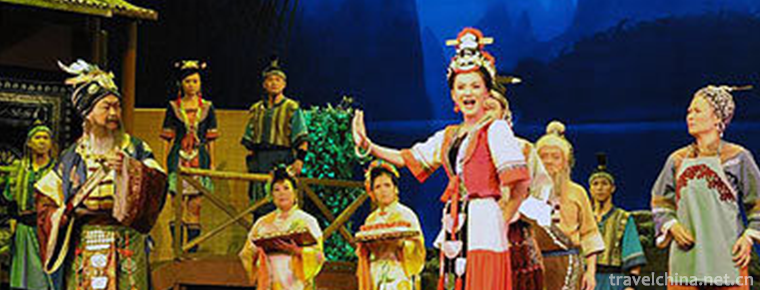
-
Xianguding Scenic Spot
Xianguding, located in the south of Huancui District, Weihai City, is only five kilometers away from the city centre. It is the highest peak in the Northwest Mountain of Wangdao, with an elevation of .
Views: 117 Time 2018-12-22 -
Liu Jiawan Chaihai Garden
Located on the eastern coast of Taolu Town, Donggang District, Rizhao City, Liujiawan Chaihai Garden is a national AAAA-level tourist attraction, a popular science education base, and a core scenic sp.
Views: 113 Time 2018-12-26 -
Beijing World Flower Garden
The World Flower Grand View Garden is located on the north side of Nansi Ring Auxiliary Road and the east side of Jingkai Highway in Beijing. It has superior geographical position and convenient trans.
Views: 131 Time 2018-12-26 -
Zhou Qiao old street
Zhouqiao Old Street is a national AAAA tourist attraction. The old street of Ximen in Jiading is located on the west side of Bole Square in downtown Jiading.
Views: 165 Time 2019-01-21 -
Ewenke to seize the pivot
Pivot-snatching is a traditional competitive event of Ewenki nationality. It was performed by the representative team of Inner Mongolia Autonomous Region in the 6th National Minority Traditional Sport.
Views: 138 Time 2019-04-28 -
Haizi Opera
Hezi Opera is one of the traditional operas in Anhui Province. It was named after the pronunciation of the word "sea". It is popular in some areas of Anhui and Henan.
Views: 193 Time 2019-05-03 -
Making Techniques of Pickled Vegetables
Making pickles, the traditional skills of Beijing Liubiju Food Co., Ltd., is one of the national intangible cultural heritage..
Views: 107 Time 2019-05-06 -
Shuoguzi
Shuoguzi, also known as Jingzhou Shuoguzi, is a kind of traditional folk music in Hubei Province. It mainly talks, sings in the middle, beats drums and tells stories, accompanied by suona. It is popul.
Views: 131 Time 2019-06-16 -
Bronze drum dance
Tonggu dance is one of the most popular and influential ancient dances among the Zhuang and Yi people in Wenshan Zhuang and Miao Autonomous Prefecture of Yunnan Province. It is distributed in Zhuang a.
Views: 94 Time 2019-06-21 -
Long Drum Dance of Yao Nationality
Chinese Yao folk dance. Popular in Guangdong, Guangxi, Hunan and other provinces where Yao people live together, most of them perform on traditional Yao festivals, harvest celebrations, relocation or .
Views: 208 Time 2019-07-11 -
Cao Cao
Wei Wu Di Cao Cao (155 years - 220 March 15th), the name is Geely, the word Meng De, nicknamed hide. Prefectural governor of Yuzhou Qiao (today) Anhui Bozhou Person . Eastern Han Dynasty Outstanding i.
Views: 379 Time 2019-09-07 -
Yibin transportation
Yibin is a transportation hub city in South Sichuan, which is famous for its comprehensive three-dimensional transportation network of water, land and air. It is located at the starting point of the golden waterway of the Yangtze River and the strategic point of Sichuan Yunna.
Views: 119 Time 2020-12-18

